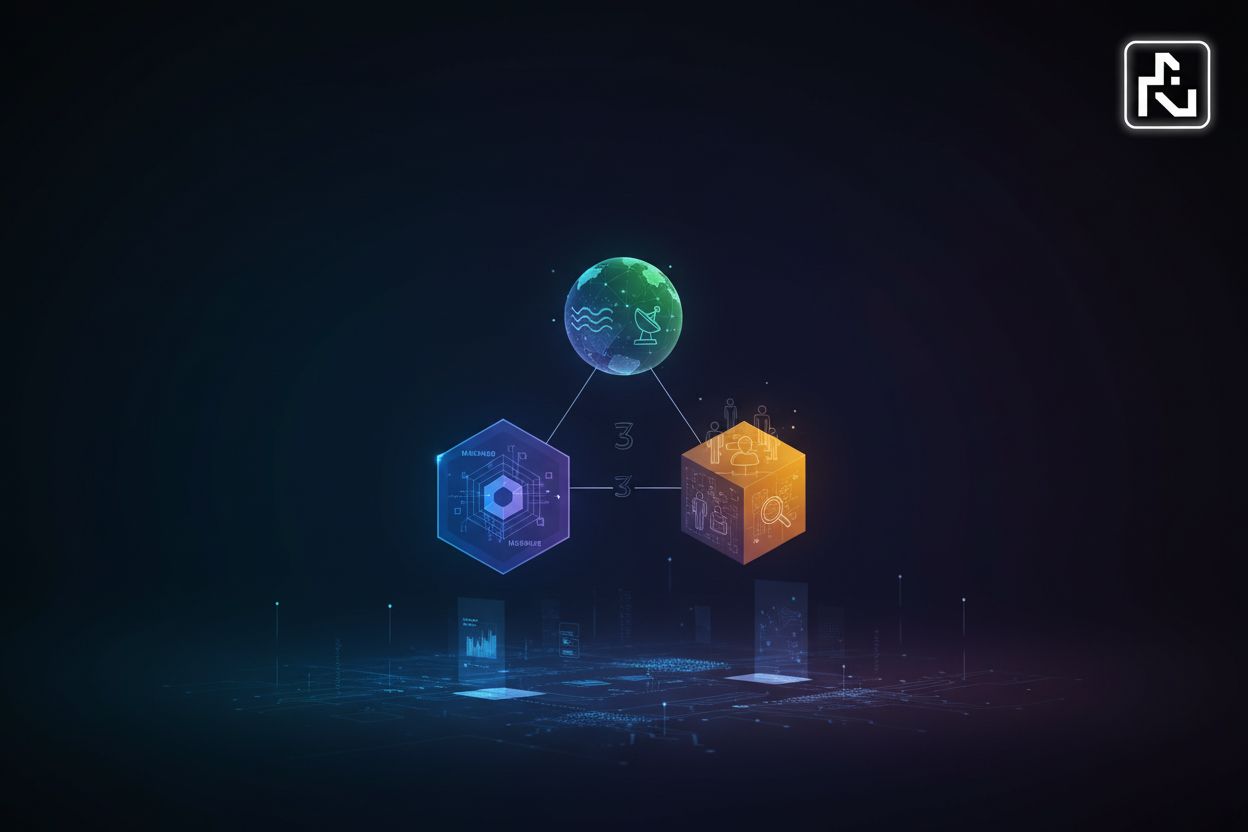Mastering Remote UX Research: A Comprehensive Guide for Brand Managers & CMOs
TL;DR
The Evolving Landscape of UX Research: Why Remote?
Did you know that UX research can now happen without ever being in the same room as your users? As digital interactions become more prevalent, the shift to remote UX research is not merely a trend but a necessity for brands aiming to stay competitive.
Digital transformation has changed how businesses operate and interact with customers. This shift demands research methods that are both agile and scalable.
- Agile and Scalable Research: Remote UX research allows you to gather insights quickly and efficiently, adapting to changing project needs. For example, a retail company can use online surveys to gauge customer preferences for new product lines in real-time, enabling faster iterations and improvements.
- Geographically Dispersed User Bases: Remote methods address the challenge of reaching users across different locations. A healthcare provider can use remote interviews to understand the needs of patients in rural areas, ensuring that digital health solutions are accessible and user-friendly for everyone.
- Cost and Time Efficiencies: Compared to traditional in-person research, remote UX research offers significant cost and time savings. Finance firms can leverage remote usability testing to optimize their online banking platforms, reducing the need for expensive lab setups and travel.
Remote UX research offers unique advantages that can significantly enhance your brand strategy.
- Enhanced Inclusivity: Reach diverse user groups, including those with disabilities or those in remote locations, ensuring a more inclusive design process. According to Maze, remote user research is more inclusive than in-person testing.
- Faster Feedback Loops: Obtain feedback quickly, enabling quicker iterations and improvements based on real user data. A software company can use unmoderated testing to gather feedback on a prototype, accelerating the development cycle.
- Real-World Context: Observe users in their natural environments, gaining insights into how they interact with your products in their everyday lives.
Integrating UX research with your digital marketing strategy ensures a user-centric approach that drives better results.
- Data-Driven Insights: Optimize digital campaigns with insights derived from user behavior and preferences.
- Understanding User Behavior: Gain a deeper understanding of how users interact with your brand across various digital touchpoints.
- Improving Brand Perception: Enhance customer satisfaction through user-centric design, leading to improved brand perception.
As you embrace remote UX research, you'll be equipped to make informed decisions that resonate with your audience. Next, we'll discuss the essential tools and platforms that facilitate effective remote UX research.
Core Remote UX Research Methodologies: A Practical Toolkit
Remote UX research is like having a superpower, enabling you to understand your users no matter where they are in the world. But with so many options, how do you choose the right tools and methods?
Remote usability testing allows you to evaluate how users interact with your product from afar. It is an invaluable method for identifying usability issues and optimizing the user experience.
- Moderated vs. Unmoderated testing:
- Moderated testing involves a researcher guiding participants through tasks in real-time, allowing for follow-up questions and deeper insights.
- Unmoderated testing allows participants to complete tasks independently, providing a wealth of data from a larger user base.
- Choosing between these approaches depends on your research goals. Moderated testing shines when you need in-depth understanding, while unmoderated testing excels at gathering broad feedback.
- Tools for remote usability testing:
- Maze offers a platform for running unmoderated usability tests, prototype testing, and surveys. As mentioned earlier, Maze highlights the inclusivity of remote user research compared to in-person testing.
- UserTesting.com provides access to a diverse panel of users and tools for both moderated and unmoderated testing.
- Lookback facilitates moderated research with features like live notes and session recording.
- Best practices for designing effective usability tests remotely:
- Provide clear and concise instructions to participants.
- Pilot test your study to identify and fix any potential issues.
- Keep tasks focused and manageable to maintain participant engagement.
Online surveys and questionnaires are powerful tools for gathering quantitative data from a large audience. They provide valuable insights into user preferences, attitudes, and behaviors.
- Designing targeted surveys for specific user segments:
- Tailor your survey questions to address the specific needs and interests of each user segment to maximize relevance and response rates.
- For example, a healthcare provider could survey patients with chronic conditions to understand their experiences with telehealth services.
- Leveraging survey tools:
- SurveyMonkey offers a wide range of survey templates and analytics tools.
- Google Forms provides a simple and free way to create and distribute surveys.
- Typeform offers a visually appealing and user-friendly survey experience.
- Analyzing survey data to identify trends and patterns:
- Use statistical analysis techniques to identify significant trends and patterns in the data.
- Visualize the data using charts and graphs to communicate your findings effectively.
Remote user interviews allow you to gather in-depth qualitative data about user experiences and perspectives. They provide valuable context and insights that quantitative methods may miss.
- Conducting effective remote interviews:
- Zoom and Google Meet are popular platforms for conducting remote interviews.
- Consider dedicated platforms that offer features like built-in note-taking and transcription.
- Crafting insightful interview questions:
- Ask open-ended questions to encourage participants to share their thoughts and experiences in detail.
- Use follow-up questions to probe deeper and gain a more thorough understanding.
- Techniques for building rapport and trust with remote participants:
- Start the interview with a friendly introduction and explain the purpose of the research.
- Listen actively and show empathy to build a connection with the participant.
Card sorting and tree testing are valuable methods for understanding how users organize and navigate information. They help you optimize the information architecture of your website or app.
- Using card sorting to understand users' mental models:
- Card sorting involves asking participants to organize topics into categories that make sense to them.
- This method reveals how users think about your content and helps you design intuitive navigation structures.
- Employing tree testing to validate navigation structures:
- Tree testing presents participants with a text-based version of your website's navigation and asks them to find specific items.
- This method helps you identify any usability issues with your information architecture.
- Tools for remote card sorting and tree testing:
- OptimalSort is a popular tool for conducting remote card sorting and tree testing.
- Treejack specializes in tree testing and provides detailed analytics.
By mastering these core remote UX research methodologies, you'll be well-equipped to gather valuable user insights and create exceptional digital experiences. These methods align with the three-dimensional framework discussed by the Nielsen Norman Group, which emphasizes attitudinal vs. behavioral, qualitative vs. quantitative, and context of product use.
Next, we'll explore how GetDigitize can help you implement these strategies and achieve digital excellence.
Overcoming Challenges in Remote UX Research
Remote UX research isn't without its hurdles. Understanding these challenges prepares brand managers and CMOs to navigate them effectively.
One significant challenge is technical difficulties. Participants might struggle with internet connectivity, software compatibility, or unfamiliar platforms.
- Provide comprehensive technical support and clear guidance before and during the sessions. A retail company, for example, could offer a pre-test call to ensure participants can access the necessary tools for a usability test of their new mobile app.
- Ensure compatibility across various devices and platforms. A finance firm should test its online banking platform on different browsers and operating systems to avoid excluding users.
- Address accessibility for users with disabilities. A healthcare provider should ensure its telehealth platform is compatible with screen readers and offers alternative input methods for users with motor impairments.
Ensuring data accuracy and minimizing bias are crucial.
- Employ rigorous data validation techniques to identify and correct errors in participant responses. For example, use attention-check questions in surveys to weed out insincere participants.
- Be aware of potential biases in remote settings. Participants might feel less comfortable sharing honest feedback in a recorded session.
- Implement strategies to minimize biases. Offer anonymity, clearly state the purpose of the research, and emphasize the importance of honest feedback.
Keeping participants engaged can be tough.
- Create interactive research sessions with gamified elements or collaborative tasks. A software company could use virtual whiteboards to brainstorm new features with users.
- Encourage open communication and feedback by creating a safe and welcoming environment.
- Build rapport with remote participants through personal introductions and active listening.
As Maze notes, remote research is more inclusive. Embrace this inclusivity by proactively addressing these challenges.
By tackling these issues head-on, you ensure your remote UX research yields valuable insights. Next, we'll explore how GetDigitize can help you implement these strategies and achieve digital excellence.
Integrating Remote UX Research into Your Digital Transformation Roadmap
Remote UX research is no longer a futuristic concept, it's an integral part of successful digital transformation. But how do you weave it into your roadmap for maximum impact?
Integrating remote UX research starts with culture. Promote its importance across departments, so everyone understands the value of user feedback.
- Promoting the importance of UX research across departments: Educate teams on how UX insights drive better product design and customer satisfaction. For example, a financial institution could host workshops demonstrating how user feedback led to a more intuitive mobile banking app, increasing customer engagement.
- Involving stakeholders in the research process: Include product managers, marketers, and even executives in research sessions. A retail company might invite stakeholders to observe remote usability tests, fostering a shared understanding of user pain points and needs.
- Fostering a culture of continuous improvement based on user feedback: Establish processes for regularly incorporating research findings into product iterations. A healthcare provider could create a system where user feedback from remote interviews directly informs updates to their telehealth platform.
It's essential to quantify the benefits of remote UX research to demonstrate its value. You can track key performance indicators (KPIs) and showcase the impact of UX improvements on business outcomes.
- Defining key performance indicators (KPIs) for UX research: Establish metrics such as task completion rates, user satisfaction scores, and conversion rates to measure the impact of UX improvements.
- Tracking the impact of UX improvements on business outcomes: Monitor how UX changes influence metrics like customer retention, revenue, and support costs.
- Demonstrating the value of UX research to executive leadership: Present data-driven reports to highlight the ROI of UX efforts and secure continued investment.
The field of remote UX research is constantly evolving with emerging technologies. Keep an eye on such trends as AI-powered tools and virtual reality (VR) and augmented reality (AR).
- AI-powered tools for automated data analysis: Implement AI to analyze large datasets from remote studies, identifying patterns and insights more efficiently.
- Virtual reality (VR) and augmented reality (AR) for immersive research experiences: Use VR and AR to simulate real-world scenarios, allowing users to interact with products in a more natural and engaging way.
- The evolving role of UX research in shaping digital strategies: Integrate UX research into all stages of product development.
By embracing these strategies, brand managers and CMOs can ensure that remote UX research becomes a cornerstone of their digital transformation efforts. The three-dimensional framework discussed by the Nielsen Norman Group can help inform research method selection.





